
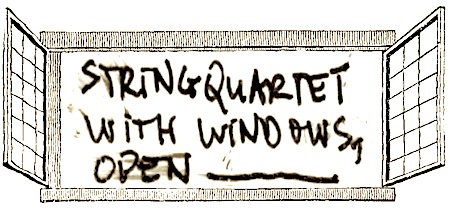
[ Take me straight to the music! ]
SQWWO is a string quartet (or, more precisely: a violin quartet) that lasts 24 hours and is playing in my living room; with all windows wide open. I recorded a (first) version of the work between December 2013 and July 2014, in 72 parts. Each of the parts lasts 20 minutes. Together the 72 parts constitute one full 24 hour cycle: the work starts and ends at 9:00 am, where it then - eventually - might start all over again: the recording is, as a matter of fact, a seamless 24 hour loop and interweaves the slow rolling waves of violin sounds (always different, but in a way also always the same) that are played back by two instances of an earlier work (Kris Kras), with the waves of traffic that - between two sets of traffic lights - are rolling up and down the road running along my house; always different, and always the same. Moreover and importantly, the character and intensity of the waves of traffic evolve along with the passing of a 24 hour day, with the seasons and the changes in the weather.
It is thus that besides being a sonic picture of the street laid out outside my windows, SQWWO, literally and essentially, is about - and is - the passing of (my) time.
The work's recording, the closing and then locking of its circle, has been —quite litereally— like speculative alchemy. It was a quite conscious attempt at a Catweazliean charm, making the chance constellations of the violin's notes fix point time and freeze that what, after near to a quarter of a century, I knew would soon cease to be my quotidian, my everyday sound scape.
As the entanglement of random walks that layer two «form-ally» very similar soundscapes (the city traffic sound scape and the violins) the work, without any apparent dramatic development, of an extreme long duration and cycling back upon itself, resides in a virtually everlasting *now*, an eternal present (a moment's lament, an eye's tearful blink), which is our future's past.
The full 24 hours of recording are available as a high quality digital download at Bandcamp, where you also may stream the full set of recordings. [ The playback of the parts is intended to be gapless, however, which is not possible when streaming at Bandcamp. Gapless playback can only be achieved by downloading the parts and playing them back in a single playlist in, e.g., iTunes. ]
Acquirers of the full digital version of SQWWO will automatically receive any updates of parts that - in the near future - may appear.
[ Take me straight to the music! ]
september 11, 2014.
11 min read 🤓
The present is our future's past
Trackback
There are of course quite a number of references that I could point to as being an origin or other, earlier, example or application of the idea and/or concept of 'opening the windows' while (and/or as part of) making music.
But I will give you only one.
A relatively personal one.
I forgot the precise year that this small, metaphoric anecdote took place, but it was in the late 1990's or the early noughties during one of Karlheinz Stockhausen's composition seminars, the lectures that he gave as part of his Summer Courses, in Kürten, Germany. I forgot in what year exactly, and I also forgot what composition he was lecturing about, though it was surely some part or other from Licht. He had gotten to some spot in the piece where the numbers that he found in the score (probably the tempi) where not at all the ones one would expect, given the relation of the piece to Licht's meta-structure, super formula and stuff. Karlheinz for some time continued tapping frenetically on the electronic calculator that he had brought along, trying to get his numbers straight; but it just did not want to work out. And he fell silent. Sat there. Thinking. And we, his audience, sat in silence with him. Waiting. For what seemed to be an eternity.
Until suddenly a broad smile appeared on his face and he exclaimed: "But well, of course! ... This is very interesting!" He tapped with a finger on the bar in the score that had given him so much trouble. "Because," he said, "this is ... Yes. Of course! This is where I forget about the numbers. This is where, while composing, I open up the windows to let the sounds come in from outside..."
...
D120
The road that runs along my house is a departmental - 'the-part-mental' - road. It is on the final stretch of the nine kilometer long D120, connecting Paris with Bry-sur-Marne, via Nogent-sur-Marne; a busy four lane street, where (according to a 2008 count) more than 27,000 vehicles pass each day.
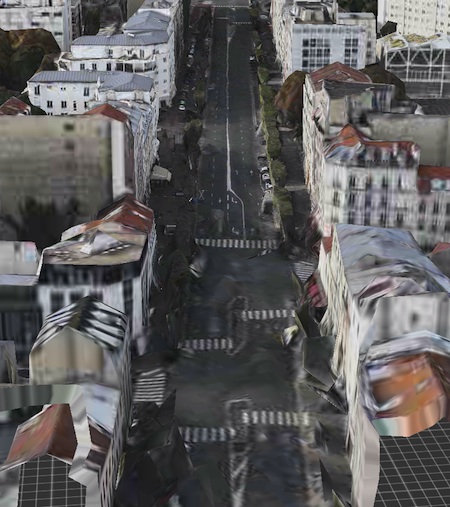
Two of the lanes lead - from the east to the west - into Paris, and the other two - from the west to the east - lead out of the city. When you cross the street and look to the West, you can see the Eiffel Tower sticking out from the far other end of the city.
The apartment, where I have been living for more than seventeen years, is on the first floor. The four front windows open up to the D120. Two of these are the 'windows, open' in the recording of the string quartet, though in the Google Streetview shot below they are closed. (You can catch a glimpse of my August Förster piano, that you might recognize from other instants of this blog :)
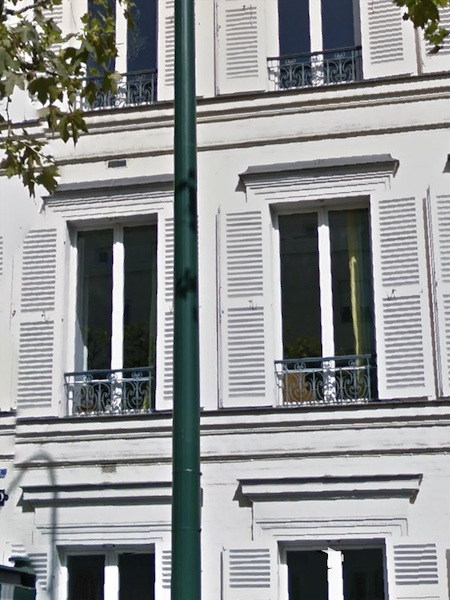
The traffic flows (east-west and west-east) are quantized by the two sets of traffic lights (one at about 150 meters to the east, and the second one at about 200 meters to the west). The lights are on 24 hours a day, 7 days a week, and - to the best of my knowledge - are set to function at always the same single time interval: for a period of about 40 seconds the lights are green and traffic pulls up, from the east to the west and from the west to the east; then, during an equally long time, the lights are red, and traffic comes to a grinding halt. Forty seconds later it is pulling up again. And so on. One big and never ending clockwork, relentlessly ticking time away.
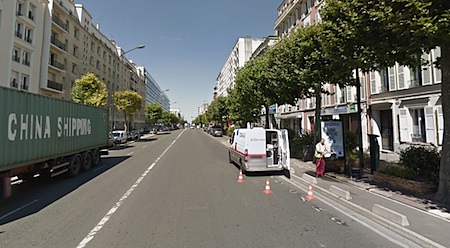
It is ticking time away in waves rolling up and down the road that is like an artery, with cars, trucks, buses, motors, scooters that are like blood cells and other stuff that some invisible heart out there, somewhere, is pumping in and out of the city. Continuously; all day and all night.
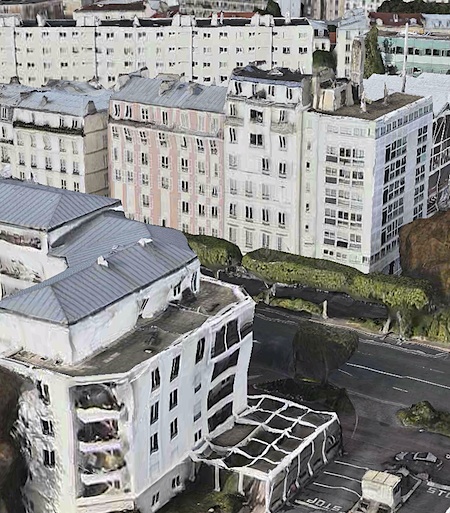
The traffic passes in what are like the waves of an ocean. And when I open up the windows the room acts like a resonator, that amplifies the ocean's roarings and rumblings which are reflected between the façades of the apartment buildings on both sides of the street.
Given that for so many years this has been a major part of my 'daily soundscape', I recorded and used it before. For example in 2003, when I contributed a 30 minutes unedited field recording made 'with the windows open' to Chris Cutler's one year long (almost) daily program Out of the Blue on Resonance FM. (The 'Out of the Blue' recording comes as a bonus track with the full digital download of SQWWO.)
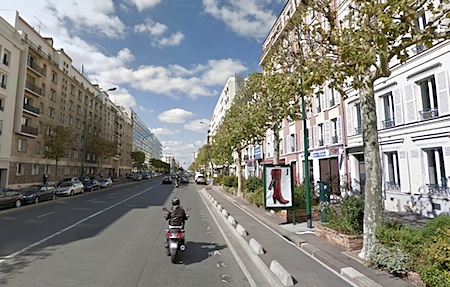
The potential and possibility of a SQWWO occurred to me sometime early December 2013. While working on the recording of a contribution for Hal McGee's Museum of Microcassette Art - directly onto the RadioShack MC3O microcassette that Hal had sent me, on an AIWA TP-VA300 dictaphone - I opened the windows. At that moment, there were two instances of Kris Kras running (on two laptops, thus effectively forming a 'string quartet'). What then struck me was foremost the apparent iso-morph-ism, the form-al similarity between the two sounding layers: between the sound of the traffic as it came waving through the open windows, and that of the combined sounds of the violins, randomly selected and played back from a collection of 1024 violin samples by my Kris Kras javascripts. The on-rolling waves of traffic sound seemed to be acting as a counter-voice. Indeed: though it is not being ruled via some script running on a computer, also the traffic sound scape that is playing continuously outside is sort of a random walk, through some finite collection of sounds that are being generated by motorized vehicles...
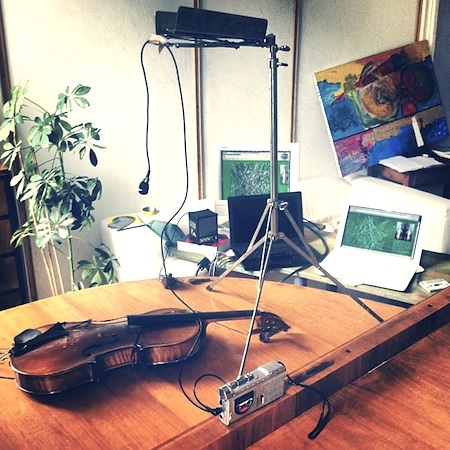
It is why the title of my microcassette for Hal's MOMA became: Sketches for String Quartet with windows, open. 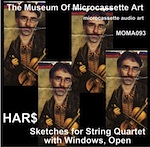
I conceived of the work as a 24 hour cycle, consisting in 72 parts, each with a duration of 20 minutes. I then did the recording of SQWWO between December 7th 2013 and July 7th 2014. Each track is identified by the time window in which it was recorded; i.e. 10201040 (meaning: 'from 10:20 am to 10:40 am') is the track that follows 10001020, and precedes 10401100. In most cases successive tracks were recorded on different days, with often very different - audibly different - weather conditions outside: the outside sounds different when it's bright and sunny, from when it rains and storms. And the traffic soundscape on working week days will be different from that of the weekends and on holidays. Sometimes there will be road or other construction works going on; sometimes the rubbish collectors pass; and so on. Even though I did not embark upon a systematic exploration, because of the large time span over which it was recorded, many of the different sounds that over a year at some time or other will sound outside of my window, were captured within the SQWWO cycle at some point or other.
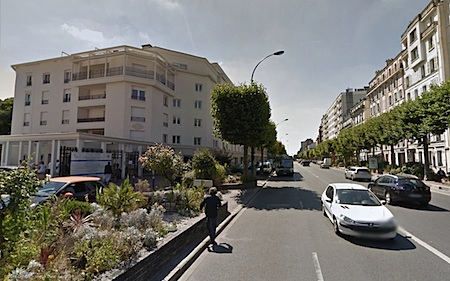
This makes that on one of its levels, the quartet is a sonic documentary of the little stretch of the D120 that I see when I look out of the window.
I'd like you to think of it as the soundtrack to you imagining me standing in one of the two open windows.
Imagine yourself standing in the other.
We are hardly moving.

As times passes.
And day shifts into evening into night.
We go on looking.
Out.
Also ...
I was happy to be able to do a relatively low profile first presentation of the SQWWO at this year's 14th Kunsttour in Maastricht (the Netherlands), which had NOW as its theme. That was earlier this year, on May 24th and 25th, when I played back the SQWWO (at the time not yet fully completed) through the open windows of the workspace of Stichting Intro in situ into a sunny Capucijnengang.
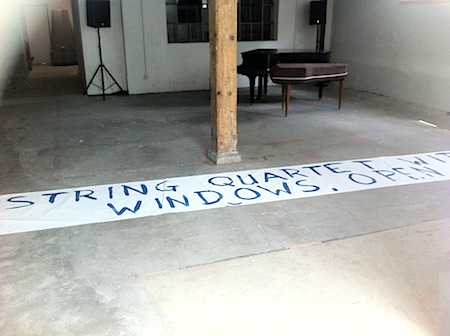
At the time I was in Maastricht for the Kunsttour, one was about to begin the demolition of a whole range of the horrible block-like bricks-and-concrete appartment buildings from the late 1960's on the edge of Malberg, the neighborhood were I grew up. Here is a Google Streetview shot from July 2009:
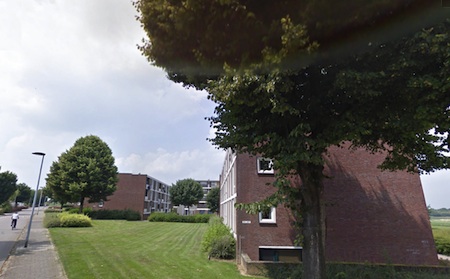
This spring, some years later, someone (a Boards of Canada fan?) had painted words on the sidewalls of the emptied 3 x 4 apartment blocks that, for only a few more weeks, would be facing the Floretruwe. In big white letters it read:
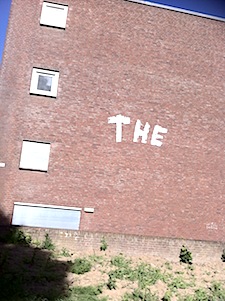 |
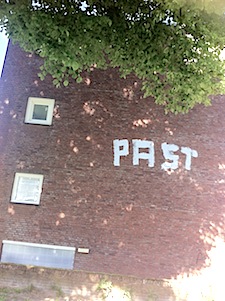 |
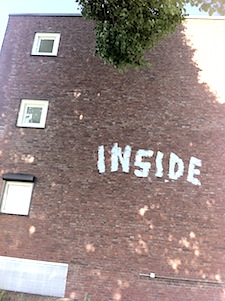 |
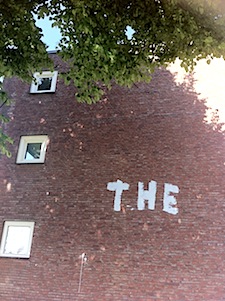 |
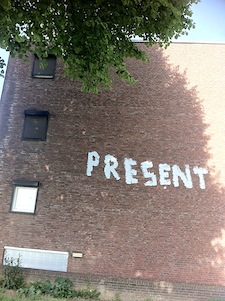 |
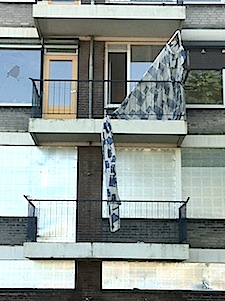 |
"The past inside the present..." It is that I would not like to burden the SQWWO with an overly strong hauntological connotation (just a little one will do), otherwise I might have picked this phrase as the string quartet's motto: a work without any apparent dramatic development, of an extreme long duration and - a 24 hour loop - cycling back upon itself, it is very much like a virtually everlasting now, the eternal present, which is our future's past.
And ...
- It is possible, would someone desire to organize or do such a thing, to produce 'real' live versions. Of the full piece, or of parts of it; and other than just via the playing back of the current recorded version, like I did in Maastricht. This would boil down to recreating the set-up of the Vincennes recording at a different location with a different set of windows opened up to a different soundscape. [Added August 28th, 2015 - The first of such SQWWO live renditions took place on July 9/10 2015 in Brussels, organized by Les Nuits du Beau Tas with support from Transcultures and the Trannsonic label.]
- Nice also if at some point or other we could do an extended version, adding live the playing of a little string trio: double bass, violoncel and viola.
- If, somewhere in the years that still have to come, I would happen to find myself for a relatively exented period of time living in a house or appartment with windows that open up to an ocean or a sea, then I will produce a 24 hour 'ocean version' of the SQWWO.
(Added April 10th, 2016)
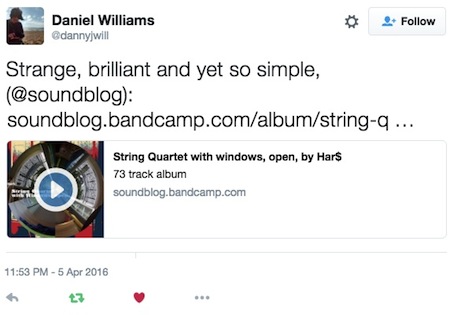
 (Added April 2nd, 2015) In the April 2015 edition of the online music magazine Perfect Sound Forever, Daniel Barbiero discusses the SQWWO in the context of what he calls 'Porous Music'. "To listen to SQWWO is to hear the eruption of the contingent," Daniel writes. "It is exemplary of the way a porous work can bring unlistened-to sounds to a listener's attention. With its indiscriminate mixture of music and environmental sounds, SQWWO reorders, reverses and eventually collapses the relationship between hearing and listening in a random way. It is something of an audio Necker cube, in that the relationship it facilitates between listening and overhearing is inherently unstable. Unstable, because it balances on a paradox SQWWO deliberately sets up: the paradox of taking unintended, contingent sounds and intending that they become the necessary object of the listener's attention."
(Added April 2nd, 2015) In the April 2015 edition of the online music magazine Perfect Sound Forever, Daniel Barbiero discusses the SQWWO in the context of what he calls 'Porous Music'. "To listen to SQWWO is to hear the eruption of the contingent," Daniel writes. "It is exemplary of the way a porous work can bring unlistened-to sounds to a listener's attention. With its indiscriminate mixture of music and environmental sounds, SQWWO reorders, reverses and eventually collapses the relationship between hearing and listening in a random way. It is something of an audio Necker cube, in that the relationship it facilitates between listening and overhearing is inherently unstable. Unstable, because it balances on a paradox SQWWO deliberately sets up: the paradox of taking unintended, contingent sounds and intending that they become the necessary object of the listener's attention."
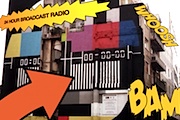 (Added October 16th, 2014) Say Goodbye to Daylight Saving! During the weekend of October 25-26th 2014, the intrepid riders of the air waves at Radio On Berlin broadcasted the full 24 hours of the String Quartet with windows, open, complete and unabridged.
(Added October 16th, 2014) Say Goodbye to Daylight Saving! During the weekend of October 25-26th 2014, the intrepid riders of the air waves at Radio On Berlin broadcasted the full 24 hours of the String Quartet with windows, open, complete and unabridged.
This unique online string marathon began on Saturday October 25th at 7 am, then continued for 24 hours... At some point it clashed head-on with the ending of daylight saving time on Sunday October 26th at 3 am...
tags: string quartet, sqwwo, kunsttour
# .455.
comments for String Quartet with windows, open ::
|
Comments are disabled |
Read about the String Quartet with windows, open on the SoundBlog:
(2015, august 30) - Live in Brussels - 9/10 July 2015, (ii) - Picturebook
(2015, august 30) - Live in Brussels - 9/10 July 2015, (i)
(2014, september 11) - String Quartet with windows, open
(2013, july 03) - How to keep devils away - Kris Kras: 1024 violins, x2
Listen to the String Quartet with windows, open:
(2015, 9/10 July) - SQWWO Live in Brussels
(2013, dec ~ 2014, jul) - String Quartet with windows, open